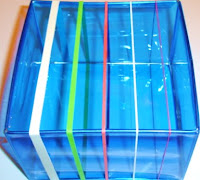Language Arts
Definition
Onomatopoeia - words that imitate real sounds
Examples
achoo, bang, beep, boom, bow-wow, brrr, buzz, chirp, clang, click, cluck, ding-dong, fizz, hiss, honk, meow, moo, oink, ouch, plop, pop, ring, roar, sizzle, splash, splat, thump, tick-tock, tweet, vroom, whiz, whoosh, zoom
Suggested Teaching Ideas
Choose the activities that are appropriate for your students depending on their ages, ability levels and interests.
- Discuss the fact that many animal sounds are onomatopoeia. Read *literature that contains these words to your students. Brainstorm animal sound words with students and begin a class list. (meow, oink, bow-wow, moo)
- Read *literature to the students which contains numerous examples of onomatopoeia. Have students LISTEN for the Sound Words.
- Create a class chart of Onomatopoeia Sounds.
- Have children close their eyes and LISTEN for sounds.
- Each day as children hear or read stories, riddles, etc.have them add any new onomatopoeia words that they come across to the class chart. (Continue for several weeks.)
- Add sound words heard in everyday life to their chart. (examples: clocks-tick-tock, cars-beep, beep)
- Students can invent their own sound words.
- Listen to music tapes, CDs, DVDs of nature sounds, ocean sounds, rainforest sounds, farm sounds, city sounds, country sounds, etc.
- Have students play or listen to musical instrument sounds.
- Have students create their own musical instruments.
- Sing songs with sound words (Old MacDonald Had a Farm)
- Have students illustrate sound words.
- Share riddles and jokes that contain sound words. (lots of knock-knock jokes)
- Make-up sentences using sound words.
- Listen to and write poetry using onomatopoeia.
- Read comics strips that contain onomatopoeia and highlight the sound words.
- Work in pairs, small groups, or individually to create comic strips using onomatopoeia.
- Act out commercials seen on TV that contain sound words.
- Create jingles for their favorite products using onomatopoeia.
- Watch movies that contain lots of sound words (example: Disney's Fantasia)
- Take field trips to zoos, aquariums, etc. (or other places that have lots of sounds)
- Attend sporting events: basketball, hockey, baseball, etc. (lots of sounds here!)
- Attend a live symphony orchestra performance or listen to a symphony on CD, video, etc.
 |
| BUZZZZ |
*Literature Examples
- Mother Goose and other Nursery Rhymes and Kids' Poetry
- Common songs for children: "Old MacDonald Had a Farm"
- Dr. Suess: Mr Brown Can Moo! Can You?
- Raffi - The Wheels on the Bus
- Marc Robinsom: Cock-a-doodle-doo: What Does It Sound Like to You?
- Pam Conrad: Animal Lingo
- Hank DeZutter: Who Says a Dog Goes Bow-wow?
- Shel Silverstein Poetry Books: ("Noisy Day" from Falling Up, "Squishy Touch" and "Push Button" from A Light in the Attic, "The Fourth" from Where the Sidewalk Ends.)
- Beverly Cleary: The Mouse and the Motorcycle (chapter book)
Here is a link to a video of Mr Brown Can Moo! Can You? on the Gamequarium website.
Click here: Mr. Brown Can Moo! Can You?
For an alphabetical list of onomatopoeia words go here.
 |
Tick - Tock, Tick - Tock
|
 |
| Beep! Beep! |
To see a really cute Onomatopeia Bulletin Board from SchoolBulletinBoards.net click here.
___________________________________________________________________

















































